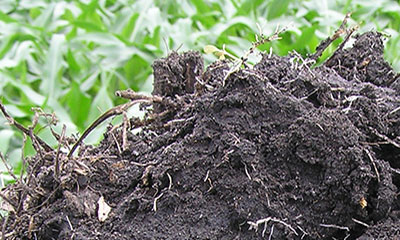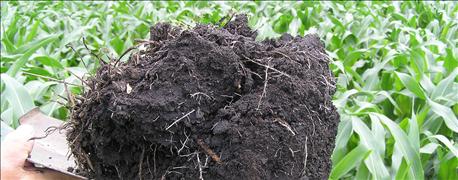October 4, 2016

In the third year of tough economic conditions for farmers, it’s time to ask tougher questions when planning and making your purchases. Every dollar you spend should help you in 2017 and beyond – that’s not too much to ask. Here are some questions to help you get better value.
Have you looked beyond NPK?
The first three numbers get most of the attention – which is why many fertilizer programs get the NPK right. But if secondary and micronutrient deficiencies aren’t addressed, yields will plateau, even with more NPK. There are 17 nutrients essential for crop production, and you won’t reach a plant’s genetic potential unless you address all of them.

Is your soil healthy? Ask your agronomist if (and how) every dollar you spend on crop nutrition is improving soil organic matter.
Calcium, magnesium, sulfur and micronutrients all play significant roles in crop production. We prefer a homogenous blend of these nutrients, formulated for even field coverage and enhanced plant uptake.
Do you fertilize only half your crop?
Many growers treat soybeans like a cover crop. If we treated soybeans half as well as corn, yields would increase. High-yield growers have achieved 200-bushel soybeans (and much higher profits) by managing soybeans like corn. Ask your fertilizer supplier what nutrient issues you need to address to improve soybean production and profitability.
Are you applying nutrients at the correct time?
It’s tempting to gamble by waiting to address nutrient deficiencies once they are visible in the growing crop. This is a huge mistake. In corn, many deficiencies take two weeks to show – two weeks of lost yields you can never get back. If a rescue option is available, it will always cost more to correct in season.
Plan for success and supply proper nutrition before it hurts performance. We recommend a balanced blend of dry products with varying nutrient solubility. This ensures nutrient availability throughout the growing season as a one-pass treatment. Over half the nutrients for corn are not needed until V10-V14 – highly-soluble products may have leached by then. Spoon feeding via liquids in season can be costly and difficult.
Does your fertility program improve organic matter?
Improving soil organic matter (SOM) is the number one thing you can do to improve soil health. It leads to enhanced soil microbial populations, which in turn improve fertilizer efficiency, increasing yields and buffering against environmental stressors like drought or excessive moisture. Ask your agronomist if (and how) every dollar you spend on crop nutrition is improving SOM.
While it’s possible to buy microbes and apply them directly, they won’t colonize unless you give them a reason to stay. Building a healthy microbial population is like hosting a barbecue – people won’t stay long unless you feed them. Balanced nutrients, with secondary and micronutrients, paired with a carbon source like humates or sugars, plus a serving of cover crops – that is the perfect meal for a soil microbe barbeque. It will encourage long-term microbial activity and improve soil health.
What other crops can enhance your fertility program?
Wheat, rye and oats are finding their way into more corn and soybean rotations. While these crops may be less profitable, benefits are seen over the rotation period. Reductions in fall and spring workloads, ability to update tile lines in the summer, and breaking pest cycles improve profitability. Many growers report planting soybeans following a small grain, such as wheat or cereal rye, led to increased yields, improved soil quality and less weed and disease pressures. A diversified crop rotation and cover crops will help you build SOM and fix nutrients, which further increase the efficiency of your fertilizer program.
For more information, please visit midwesternbioag.com.
You May Also Like




